I think most people picture lush tropical rain forest when they think of Hawai’i, full of waterfalls and rainbows. But there are other types of plant communities found here. One dominant type being dryland forests found mostly on the leeward sides of each island. And even though O’ahu is the most populated of the islands, it has some of the most diverse dryland forest in the entire chain.
A few weeks back, I went with a few experience hikers and botanists to check out a few gulches in the Wai’anae Kai area that are still predominantly native. Even with all the general habitat destruction, dryland forest here have been especially hard hit. The hospitable climates of dry forest attracted a lot of human development from the start. As a consequence, there aren’t very many areas of pristine dry forest left in the state.
Sapindus oahuensis is the dominant tree in this native forest. We saw many seedlings in certain areas as well, which is a good sign. The large leaves you see in the understory is Polynesian-introduced Ti (Cordyline terminalis).
The picture above does highlight a big difference between dry and wet forest: the understory is more open in dry forest than wet. In wet forest, typically the understory is full of ferns and shrubs. That’s not the case here.
It was really nice to see healthy Wili-Wili trees (Erythrina sandwicensis). Since 2005, Wili-Wili trees have been hit hard by an invasive wasp: the Erythrina gall wasp. Whole stands of Wili-Wili trees have died throughout the state in the past few years. Hopefully this is a sign of good things to come.
As nice as it was to see the the healthy Wili-Wili trees, what’s happening with Mahoe (Alectryon macrococcus) is the exact opposite. This tree is getting extremely difficult to find in the wild. Even this tree that we saw, the main trunk was already dead. Only the auxiliary shoots were still alive.
I was surprised to find out there was a dry forest type of Kolea. Many of the different Mrysine species are found in mesic to wet forest. But Mrysine lanaiensis is typically found in much drier habitats.
Papalas (Charpentiera spp.) are a dominant plant in riparian habitats. But here, C. tometosa is found in many of the drier areas as well.
Mamane (Sophora chrysophylla) isn’t as rare on O’ahu as many think. But for some reason it is only found on cliff and rocky areas on this island.
This neat looking specimen is an individual of Hala pepe (Pleomele forbesii). This species has much narrower leaves than the other Hala pepe (Pleomele halapepe) species found on O’ahu.
The highlight of my day was seeing the native butterfly Udara blackburnii. The native fauna on O’ahu is really depauperate compared to the other islands so seeing the Hawaiian Blue here is a real treat.
As the day ended, it was really neat to see that there are still for fairly intact native forest here on O’ahu. But even here in these difficult to get to gulches, they are being invaded by alien species. Hopefully we can do are part to make sure we save these unique habitats.

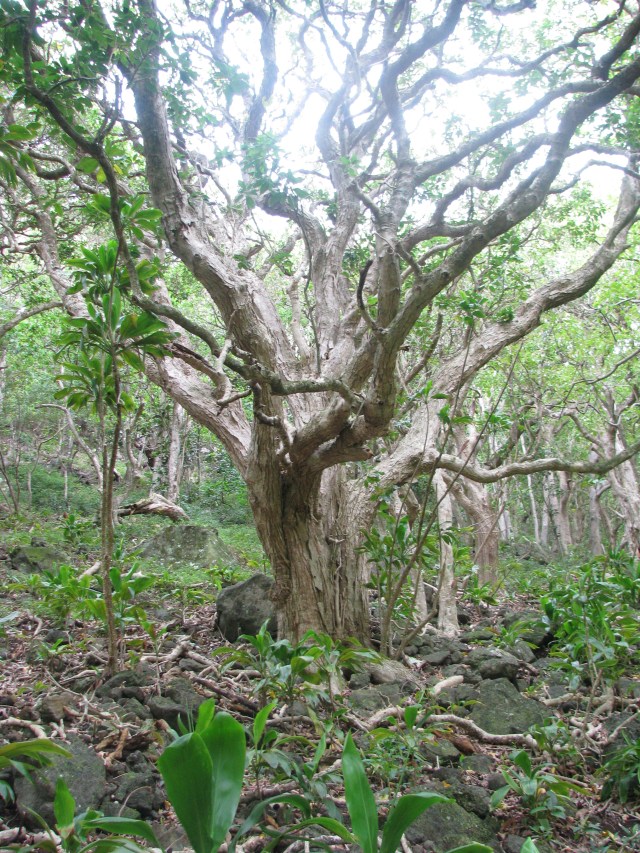

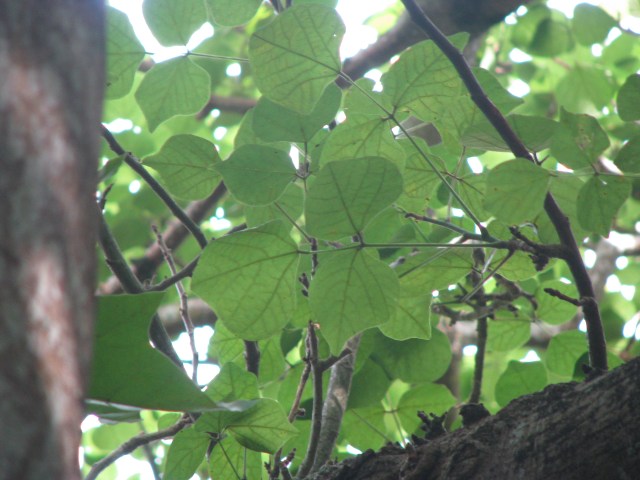

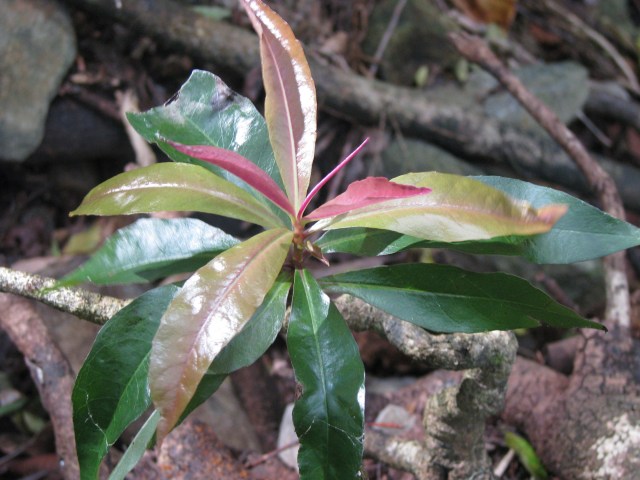
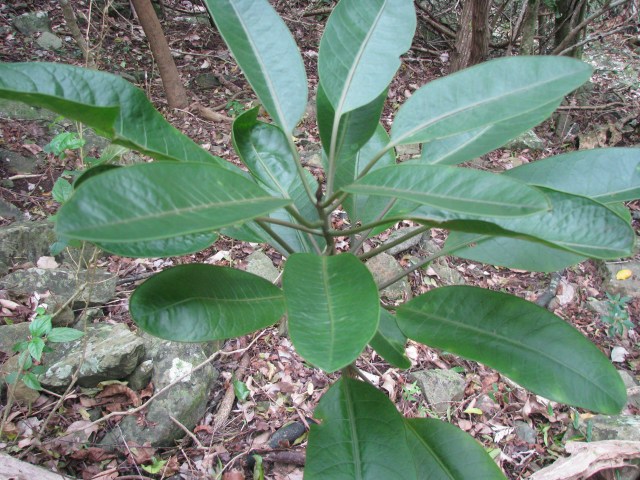
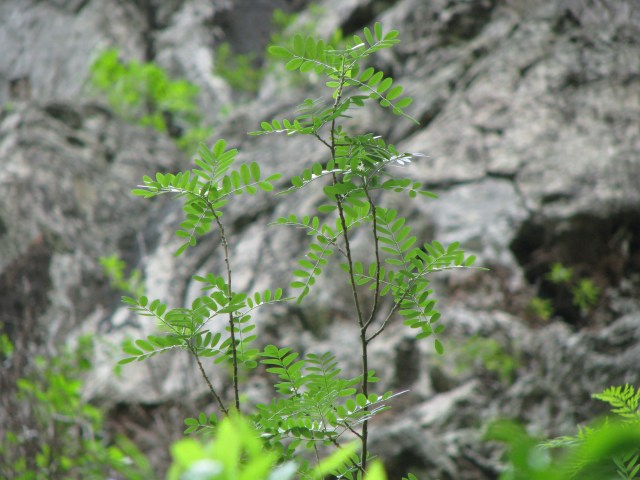
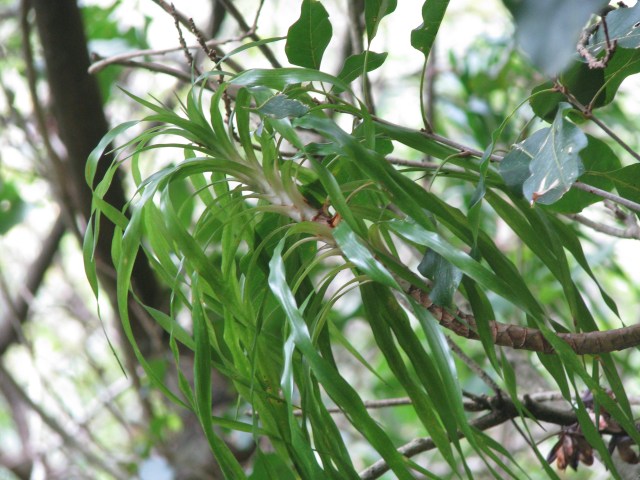
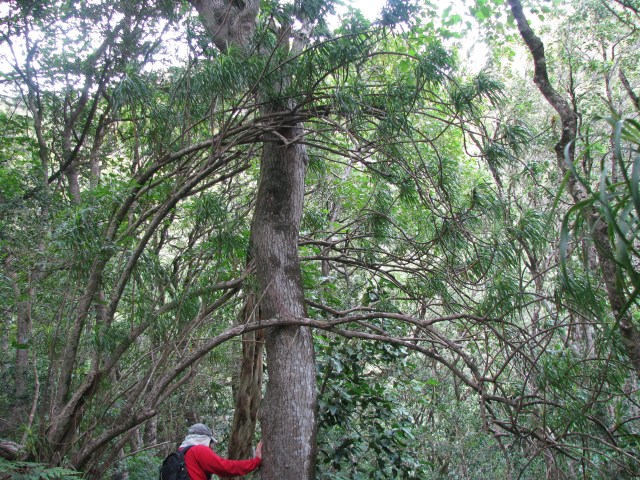

Thanks for the insights, nice work.
This is a great blog. I look forward to checking back in.
Thanks everybody. I plan on posting about all my hikes, even though I don’t consider myself a hiker… I just go where the plants are
Good blog! Looking forward to your future postings…